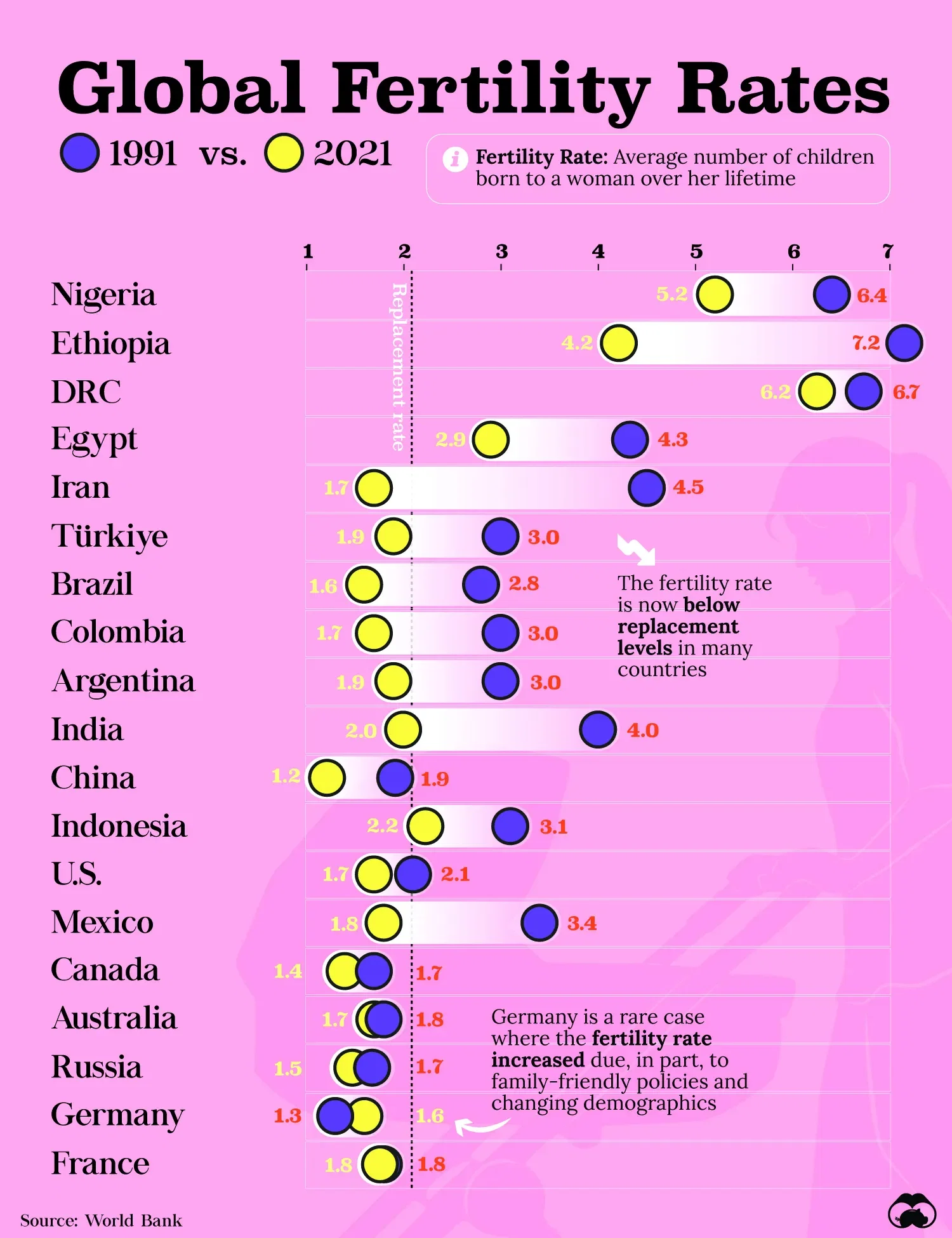Where Data Tells the Story
© Voronoi 2025. All rights reserved.

What We're Showing
Fertility rates in select countries around the world, and how they've changed over three decades. For a full list of countries, check out the data tab.
The Big Picture
When looking at fertility rates, 2.1 is a noteworthy threshold for countries to cross. If a country's fertility rate is consistently below 2.1, it indicates that its population is not replacing itself (excluding immigration), which can potentially have long-term demographic and economic consequences.
From 1991 to today, the global fertility rate fell from 3.1 to 2.3. Fertility rates are generally declining worldwide due to factors like increased contraception access, delayed childbirth for education and careers, urbanization, and changing social norms. However, there are regional variations, with some regions (Africa, Middle East) still having high fertility rates while others have very low rates (Europe, many high income nations).
Additional Context